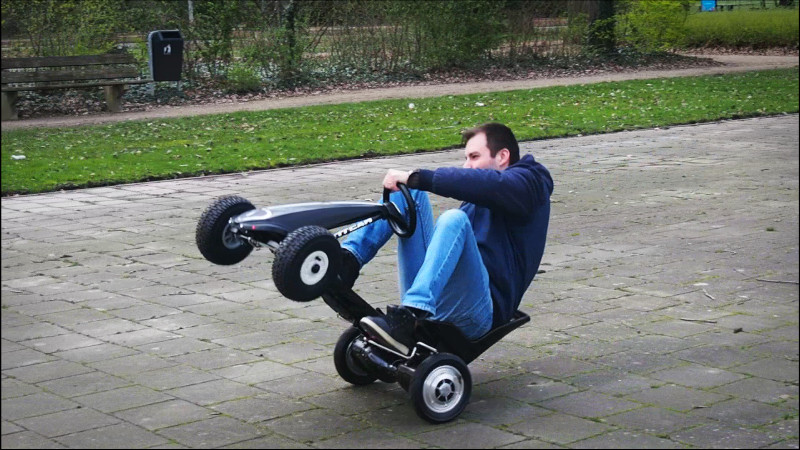The hoverboard furnished to the world in the 2010s was not the one promised to us by Hollywood. Rather than a skateboard without wheels, we got a handsfree Segway, delivering faceplanting fun for the whole family. [Emanuel Feru] decided to repurpose his into a much safer electric kart.
The build starts with a pedal-powered children’s kart, which has its drivetrain and rear axle removed. The hoverboard is bolted in its place, with its track and wheel size conveniently similar enough to make this practical. The original circuitboards are left in place, reprogrammed with custom firmware for their new role. [Emanuel]’s code enables the stock hardware to drive the motors with Field Oriented Control, for better efficiency. Additionally, the hardware reads a set of pedals cribbed from a PC racing wheel for throttle input, replacing the original gyrometer setup. With field weakening enabled, [Emanuel] reports the kart reaching up to 40 km/h.
It’s a tidy hack that makes great use of all the original hoverboard hardware, rather than simply throwing new parts at the problem. We’ve seen similar hacks before, with Segways in lieu of 2015’s most dangerous Christmas gift. Video after the break.
















It’s a nice clean build, but my initial reaction from the photo was to expect them to have taken advantage of the hover-board’s balancing tech and to have made a homebrew Segway Centaur.
(https://www.youtube.com/watch?v=l486tKKIifY)
With “hoverboards”, I can never figure out if I should be disappointed that they weren’t what BTTF promised we’d have in 2015, or relieved that my kids aren’t riding real hoverboards down the hilly roads where I live.
Ah but would a real hoverboard remain parallel to the terrain right under it, or stay square to the net gravitational vector ???
The BTTF ones look like they have two nodes that each maintain a constant height maybe 5 cm above the ground under the node, so they’d probably remain parallel. But Hill Valley appears to be all valley and no hill, so it’s hard to tell how they’d handle a slope. Either way, it would be like a frictionless longboard with no brakes… unless you had one that maintained a constant altitude above sea level instead of above ground level, which would be even scarier.
BTTF one doesn’t seem frictionless, it seems to slow down worse than a typical wheeled board when he’s trying to cross the ornamental pond thing. Worse even than a surfboard would with all the fluid drag.
Hoverboards don’t work on water… unless you’ve got POWER!
And is their only problem with water, that you have nothing to kick off against?
That then open another question, why isn’t the water surface deformed by the repulsive field?
I’ve got a hoverboard on my desk running this firmware currently. I’ve got it hooked up to a cheap e-bike hall-effect throttle. The Throttle is rated 5v, but seems to behave well on the 3.3v the Hoverboard supplies.
There’s now quite a few different flavours of this firmware out there, but Emanuel’s one works very well indeed.
Next up for me is lash the board and motors into a bike frame to make something my kids can belt around on.
This would work perfectly on a Big Wheel!
https://en.wikipedia.org/wiki/Big_wheel_(tricycle)
Oh boy, so that Wiki page has this image which seriously got the gears turning upstairs… I can already feel the wife’s disapproving glare!!
https://upload.wikimedia.org/wikipedia/commons/thumb/b/b5/Trike_02.svg/330px-Trike_02.svg.png
really interesting, thanks for sharing.
i have a few of these old hoverboards in my parts bin, and ive recently come across the projects by zblzb and ddirito converting the hoverboard hardware into diy onewheels. i am happy working the hardware builds but feel that coding/github is above my abilities, it would be really neat if the hardware could be configured for a onewheel application in the code.
ive got some reading to do.